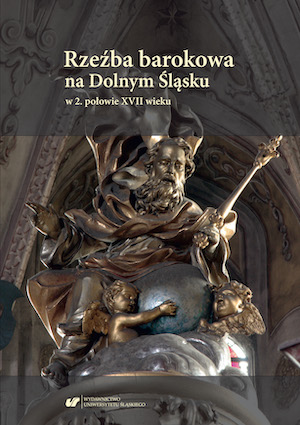Rzeźba legnicka około 1650 roku
Legnica sculpture around 1650
Author(s): Aleksandra Bek-Koreń
Subject(s): Fine Arts / Performing Arts, Visual Arts, History of Art
Published by: Wydawnictwo Uniwersytetu Śląskiego
Summary/Abstract: Research into modern sculpture made in Legnica’s art circles has been considerably intensified. A lot of new findings have emerged with regard to Renaissance and Mannerist sculpture. Researchers have also focused on early Baroque sculptures from Legnica. That is why the fact that the oeuvre of this milieu of around 1650 has barely been explored is all the more evident. Nevertheless, despite the tragic consequences of the Thirty Years’ War (1618–1648), interesting works were still produced at the time in Legnica and, especially, its environs.
Sculptures produced in Legnica around 1650 were influenced by the oeuvre of sculptors active in the area in the first quarter of the 17th century. They influenced, for example the sculptor known as the Master of the Epitaph of Caspar von Stosch in Czernina. For example, after 1643 he made the epitaph of Michael Eichorn, which as late as in 1893 was still to be found in the Church of SS . Peter and Paul.
Archive documents give us the names of artists active in Legnica around the mid–17th century, whom we have not managed to link to known works, artists like Johannis Knaute. The sculptor came from Freiberg and worked in Legnica from around 1615 until 1644. At the same time, there are works whose attribution is impossible. They include the monumental tombstone of the Sighofer family in one of the chapels of the Legnica cathedral. The tombstone was made between 1651 and 1655, most likely having been funded by Eva née Schweinichen, second wife of Johann Sighofer, imperial oficer and counsellor to the Duke of Legnica. We know of no other works by Legnica sculptors from that period, in which the form would be so unequivocally monumentalised. However, there are analogies for the way a majority of other elements were made in earlier sculptures from Legnica.
Another characteristic of artists active in Legnica around 1650 is their reliance on tried and tested forms despite evident stylistic changes already happening at the time. The sculptor who undoubtedly replicated set patterns was Abraham Lewe working in the area until 7 November 1663.
The mid-1670s was a time of important transformations happening in the wake of the sudden death of Duke George William in 1675. The remains of the last Piast duke were placed in the Piast Mausoleum in Legnica, built in 1677–1679. Its carved decorations were entrusted to the Viennese sculptor Matthias Rauchmiller, a renowned Baroque artist.
Book: Rzeźba barokowa na Dolnym Śląsku w 2. połowie XVII wieku
- Page Range: 11-27
- Page Count: 18
- Publication Year: 2020
- Language: Polish
- Content File-PDF

